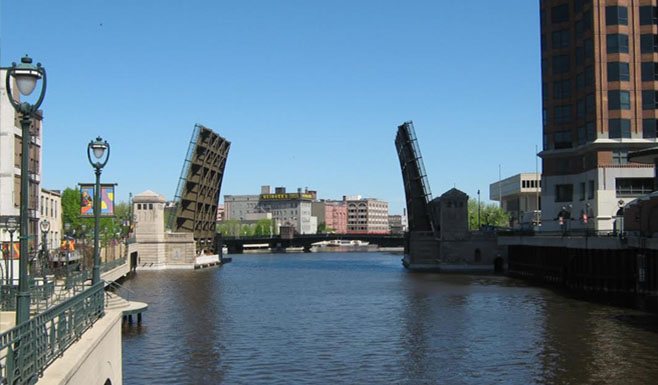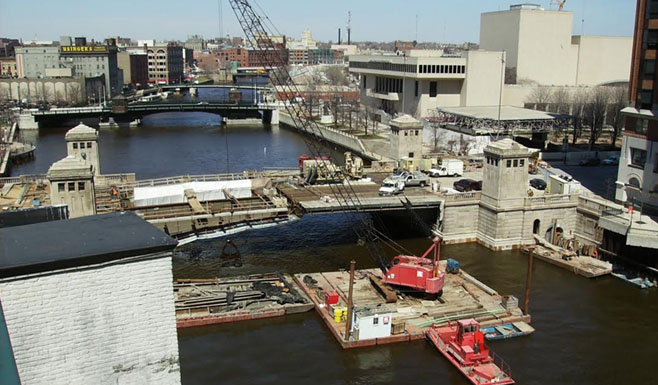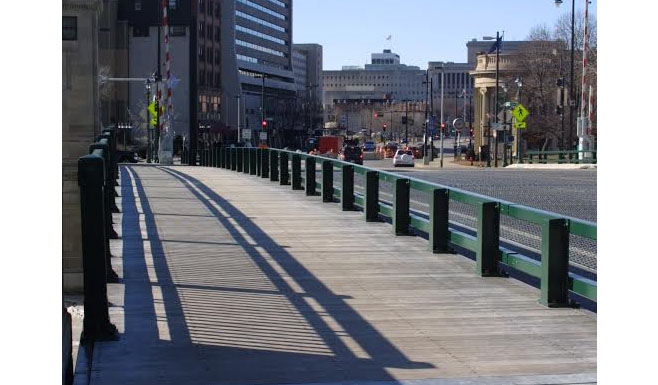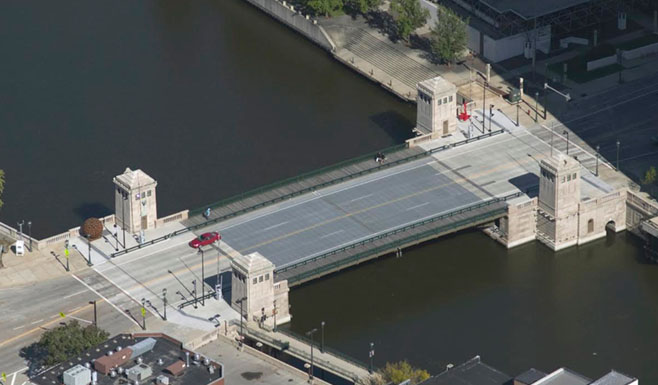Projects
Kilbourn Avenue Bascule Bridge
Milwaukee, WI
Project
Kilbourn Avenue Bascule Bridge
Location
Milwaukee, WI
Client
City of Milwaukee
Awards
- APWA National – Project of the Year Historical Restoration/Preservation
Scope and Limits of Construction Work
Complete rehabilitation of historic double-leaf bascule bridge in the heart of downtown Milwaukee. The goal was to meet current standards while preserving the bridge’s historic features. The importance of this bridge is evidenced by the four control towers, the ornate design and the fact the street was named after one of the three founding fathers of Milwaukee. The overall cost to rehabilitate this structure was less than the estimated cost of constructing a new bridge, and the structure was given new life. Construction costs were minimized by reusing many structural components. Programmable Logic Control was used for the electrical system, and fiber-optic cables were installed for remote bridge operation from another “master” bridge. This eliminated the need for an on-site bridge operator at every bridge.
Bloom Companies scope of services consisted of two phases. Phase 1 covered the inspection of structural, mechanical and electrical systems. Phase 2 covered design and rehabilitation of the structural, mechanical and electrical systems of the bridge to meet current standards, while preserving its historic features. A structural assessment of the substructure was included as part of the rehabilitation process. Design and preparation of construction documents was in accordance with WisDOT policies and procedures.
The architectural services consisted of new architectural lighting to enhance the features of four (4) bridge house pylons, replace/restore all existing bridge house metal windows with energy efficient windows that replicate the original design, and restore/replace existing bridge house interior railings. Bloom was also responsible for replacing damaged limestone veneer, rehabilitating the existing steel bascule railing, repointing damaged mortar joints with matching mortar using only hand tools, and repairing damaged floors and stairs.



